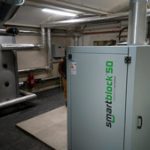BHKW-Grundlagen – Was Sie müssen müssen
Mit Ihrem Blockheizkraftwerk lassen sich effizient Strom erzeugen und auch noch Wärme. Diese wird vor Ort im Gebäude erzeugt und verbraucht. Dieser Strom kann auch ins Stromnetz eingespeist werden. Auf diese Weise profitieren Sie von günstiger Energie und reduzieren deutlich Ihre Kosten.
Eine solche Anlage hat etwa die Größe eines kleinen Kühlschranks, sie kann aber auch die Dimension von mehreren Kühlschränken haben.
Topics
How combined heating systems work
Das BHKW vereint in sich die sonst getrennte Energieerzeugung von Strom und Wärme. Doch wie geschieht das?
Zuerst verbrennt der Motor des BHKW den zugeführten Treibstoff. Dadurch entsteht Abwärme. Diese wird über Kühlkreisläufe, die den Motor und das Abgassystem durchströmen, abgeführt. Der Wärmetauscher macht anschließend die Wärme zum Heizen und zur Trinkwassererwärmung nutzbar.
Gleichzeitig treibt der Motor einen Generator an und dieser erzeugt wiederum Strom.
Ein Blockheizkraftwerk ersetzt nur teilweise eine Heizung
Beim Einbau eines BHKWs wird zusätzlich auch ein Heizkessel installiert. Der Grund dafür ist, dass ein BHKW so ausgelegt wird, dass seine Leistung den größtmöglichen Teil der Wärmegrundlast übernimmt.
Was ist die Wärmegrundlast?
Als Wärmegrundlast wird die Menge an Wärme bezeichnet, die zwischen Herbst bis Frühling mindestens durchgängig erzeugt werden muss.
Das BHKW deckt also den Grundbedarf an Wärme. Kommt es zu Lastspitzen, springt der Heizkessel ein. Lastspitzen entstehen z. B. durch einen erhöhten Wärmebedarf wegen sinkender Temperaturen. Bei Lastspitzen reicht die Leistung des BHKWs nicht mehr aus, dann produziert der Heizkessel die fehlende Wärme.
Würde ein BHKW auch die Lastspitzen abdecken können, wäre dies allerdings nicht mehr rentabel. Deswegen ist ein zusätzlicher Heizkessel notwendig.
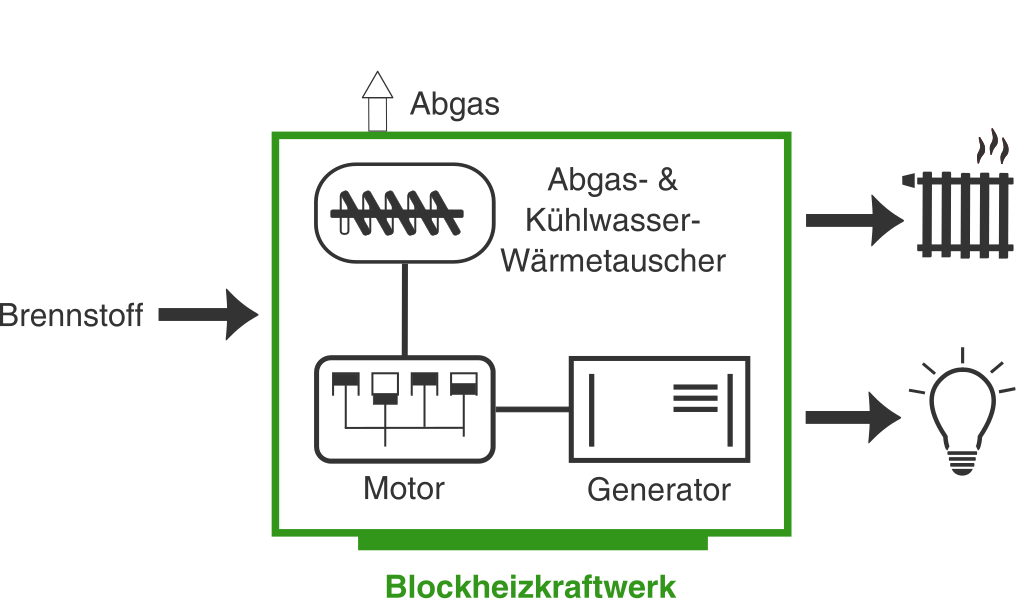
Vereinfachtes Schema der Funktionsweise eines Blockheizkraftwerks
Blockheizkraftwerke sorgen nicht für vollständige Unabhängigkeit vom Stromnetz
Ein BHKW erzeugt Strom, wenn auch Wärme gebraucht wird. Demzufolge produziert es nicht immer ausreichend Strom, auch wenn Bedarf dafür besteht. Deswegen muss der benötigte Reststrom vom öffentlichen Stromnetz bezogen werden. Für die Wirtschaftlichkeit eines Blockheizkraftwerks ist ein kontinuierlicher, jährlicher Wärmebedarf unverzichtbar.
Kurz zusammengefasst: Ihr Gewinn durch ein BHKW
Weniger Energieverluste durch kurze Transportwege
Generating energy close to the consumer reduces the energy losses that would otherwise occur on route from the producer (e.g. the power plant) to the consumer.
Less greenhouse gases
Combining the production of electricity and heat leads to a reduction in carbon dioxide.
Staatliche Förderungen sind möglich
The German government offers grants for installing a combined heat and power unit. There are also various tax incentives.
Greater independence in the energy supply
Supply only one type of energy and get two types of energy back – heat and electricity.
Permanently reduce energy costs
The gross efficiency of combined heat and power units lead to a permanent reduction of energy costs.
Higher economic efficiency
The high economic efficiency of combined heat and power units increases the value of your property.
Engines, fuels, modes of operation
Engines and fuels
Combined heat and power units can be powered by petrol and diesel engines, steam, or Stirling engines. Gas turbines or fuel cells can also be used.
Gas is the most commonly fuel used in combustion engines, but coal, heating oil and diesel oil are also suitable fossil fuels. Moreover, renewable raw materials, such as biogas, vegetable oil, and wood pellets can also be used to operate combined heat and power units. The latter, however, is technically more complex.
Modes of operation – electricity and heat-led CHP units
Man unterscheidet zwischen wärmegeführten und stromgeführten Anlagen. Dies bezieht sich nicht auf die eingesetzte Technik, sondern auf die grundlegende Planung eines BHKW.
In heat-led combined heat and power units, the output is based on the building’s heat demand. In electricity-led combined heat and power units, the output is based on the building’s electricity demand. However, there are no government grants in Germany for electricity-led combined heat and power units.
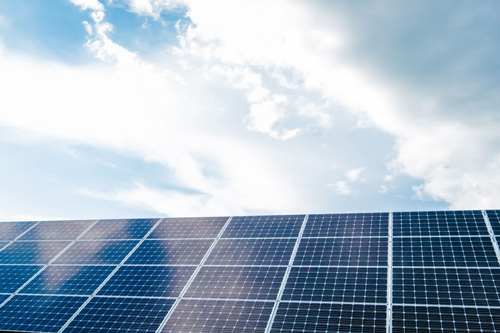
Coupling with photovoltaic, solar thermal and heat pump systems
It is possible and can also be worthwhile to combine a photovoltaic system to a CHP unit. You can get paid for feeding unconsumed electricity into the public grid.
You can also combine CHP unit with a heat pump. This is, however, associated with both greater technical effort and high investment costs.
Aktuell ist der Betrieb eines BHKW mit einer Solarthermie aus wirtschaftlicher Sicht nicht sinnvoll. Beide Systeme sind auf die Abdeckung der Wärmegrundlast ausgerichtet, sodass sie miteinander konkurrieren würden.
Leistungsbereiche von BHKW

Payback period and service life
Payback period
It is difficult to determine in general how quickly a CHP unit will pay for itself, i.e. at what point the initial investment will begin to create savings.
Dies ist von vielen Rahmenbedingungen abhängig: vom BHKW-Typ, den Anschaffungskosten, der Auslegung des BHKW und auch vom Wetter. Je höher die Kosten des eingesetzten Brennstoffes, umso länger dauert die Amortisation. Bei steigenden Strompreisen verkürzt sie sich. Im besten Fall rentiert sich ein Blockheizkraftwerk nach 4 bis 5 Jahren.
The more electricity a unit can generate, the faster it will pay for itself. However, there must also be a sufficiently large heat demand.
The larger the CHP unit, the cheaper and more profitable it will be in the end. That’s why CHP units are particularly worthwhile for commercial and large (residential) buildings.
The service life of a combined heat and power unit
In optimal situations, a CHP unit should run for more than 80,000 full load hours. But ultimately, the service life depends on, the one hand, on the right design – for example, if everything is carefully planned and calculated in advance. On the other hand, having it professionally installed (implemented) and properly maintained to ensure it runs as it’s supposed to also plays a role.
Generally speaking, service life can be extended by avoiding switching the CHP on and off.
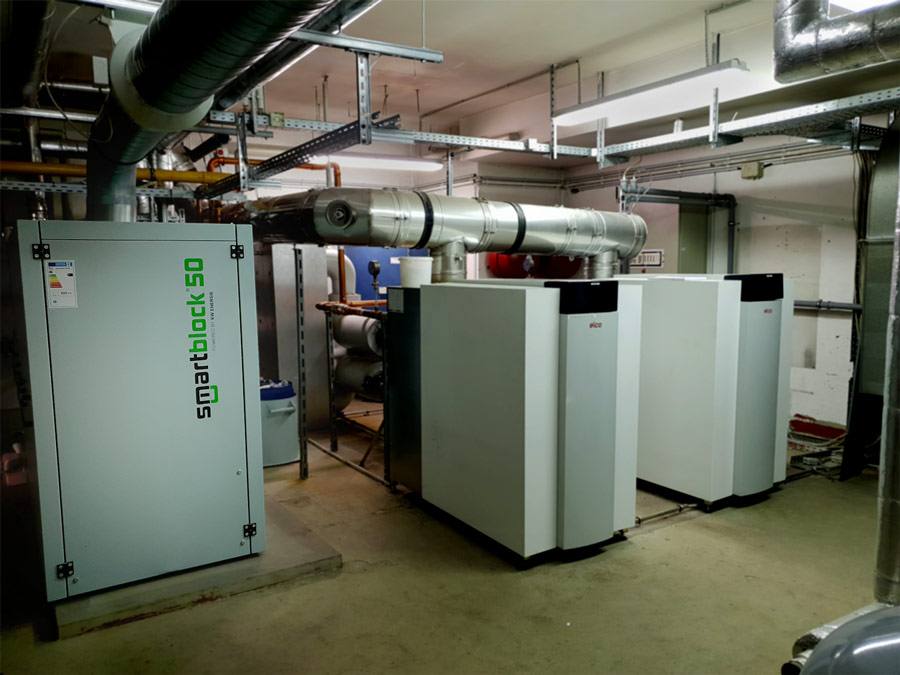
Its higher economic efficiency makes a block heat and power unit so sustainable
Der reelle Nutzungsgrad, d.h. die Effizienz eines BHKW, liegt bei 90%. Die Zahl ergibt sich wie folgt: 100% Primärenergie wird zugeführt (z. B. Erdgas). Daraus wird ca. 35% in Strom und ca. 55% in Wärme umgewandelt. Bei dem Umwandlungsprozess der Energien gehen somit nur 10% der verloren.
As such, only 10% of the energy is lost in the conversion process.
Zum Vergleich: in einem konventionellen Kohlekraftwerk kommt es bei der Umwandlung der Kohleenergie zu Strom zu Verlusten in Höhe von 64% . Nur ca. 36% der Energie kommen demzufolge als Strom in der Steckdose an. Letztendlich besitzt die Kombination „Strom aus dem Kohlekraftwerk“ und „Wärme durch einen konventionellen Heizkessel“ nur einen Gesamtwirkungsgrad von 56% .
Mit der Energieversorgung mittels BHKW wird somit zum einen die Energie effizienter genutzt. Zum anderen reduziert sich der CO2-Ausstoß durch geringere Energieverluste beim Transport zum Verbraucher.
Costs and government grants
You can expect these costs
To begin with, you should expect costs for the acquisition, planning, construction, and installation by an experienced company. Other factors, such as the CHP’s location in the building, dealing with exhaust gases, and any potential conversion measures will also play a role.
Kurzum, der Anschaffungspreis eines BHKW ist abhängig von vielen Faktoren, wie etwa von der Brennstoffart, der Größe und der Antriebsart.
Nach Inbetriebnahme kommen weitere Kosten dazu. Für einen stetigen und sicheren Betrieb benötigt ein BHKW auch Pflege. Die Anlage muss jährlich gewartet werden. Dies kann bis zu acht Prozent der Investitionskosten betragen. Dazu kommen die Brennstoffkosten, die zum Antrieb des BHKW benötigt werden.
Subsidies and grants (in Germany)
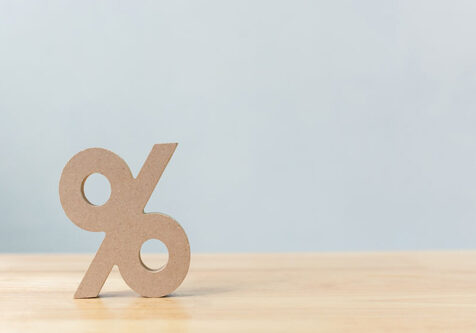
Tax benefits
CHP units can benefit from various tax concessions in Germany. For example, they are exempt from electricity tax (Section 9 (1) StromStG of the German law on electricity tax) and owners can expect a refund of their paid energy taxes (according to Section 53 EnergieSTG the German energy law). Once a year, you can apply “for tax relief for the generation of electricity and the combined generation of power and heat”, which is submitted to the main customs office. The amount of the energy tax refund depends on the type of fuel (e.g. natural gas at 0.55 ct/kWh). The savings in electricity tax amount to 2.05 ct/kWh
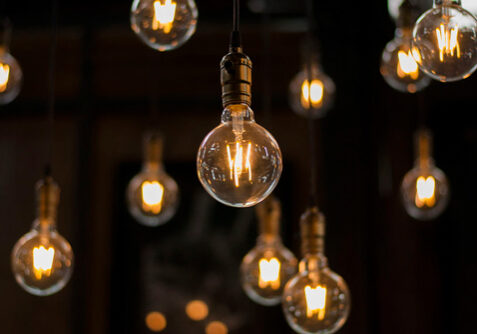
Feed-in payments for non-consumed electricity
If you generate more electricity than you actually consume, the excess can be fed into the public grid. You therefore consume electricity yourself and receive financial compensation for the feed-in. However, it is economically more profitable to consume all the electricity you generate yourself instead of feeding it into the grid, because the feed-in revenues are lower than the costs saved by not having to purchase electricity.

Loans or repayment subsidies
In Germany, the KfW (Kreditanstalt für Wiederaufbau) banking group offers low-interest loans to help you finance a CHP unit. In addition, you can apply for a grant from the Federal Office of Economics and Export Control (BAFA).
More about CHPs
More about CHPs



